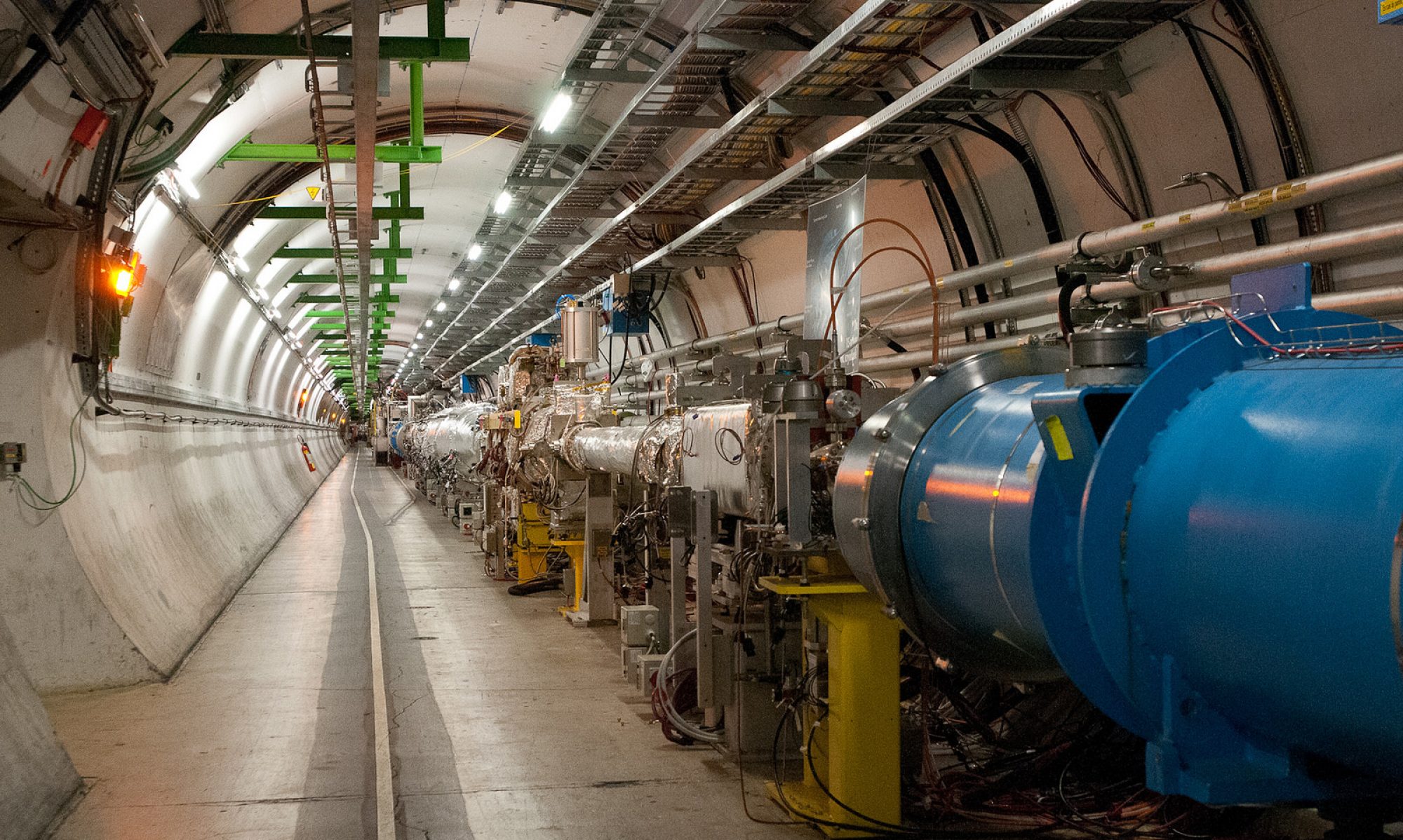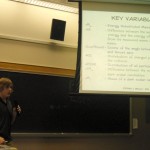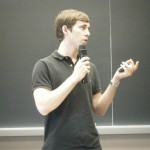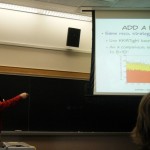I got the last slides for our two presentations just before midnight last night. Like every other thing that ever happens in physics, even with the best strategy and planning the writing of our talks came down to the last minute. After doing some last editing and tweaking on the material, I headed to sleep. 7:30am came too fast. Three cups of coffee and a light hotel breakfast later, I felt awake enough to suggest that we check out of the hotel and head in for the last day of the BaBar Jamboree.
Instead of attending the morning session, we found an empty room (coincidentally, the same room where an hour later we would give our presentations). Landon and I practiced our talk, which we decided to give as a team. I presented the introduction to our topic, motivating our dark matter search, and Landon focused on his role in finalizing the selection of signal candidates and the rejection of background. Matthew did some last data analysis while we were practicing and produced his penultimate set of slides. We put them up on the projector to check the images; his project has focused on using nuclear and atomic scattering to make beautiful images of the BaBar detector (in the process, checking our understanding of the material distribution in the detector). After some last-minute tweaking of the colors and contrast ratios in the images, we put the final versions of our talks in the meeting organizer and caught the last presentation of the first morning session.
In our parallel session, we were the second and fourth talks. Landon and I spoke first, presenting our topic and getting some good questions and useful feedback (especially suggestions on a publication strategy) from the audience of about 12 people (including the Spokesperson and both Physics Analysis Coordinators). I think generally the sentiment from the collaboration leadership was: “Great! When can we expect the paper(s)?” Matthew’s talk garnered a lot of excited conversation about material modeling and explanations of some reconstruction features. Some people had earlier said that they were coming to the session just for his talk, since they love to see details about material interactions in the detector. In fact, during a technical snafu near the beginning of Matthew’s talk, one person from a different session popped his head in the door and asked, “Oh, have you started your talk yet? Just started? Great! I’ll be right back!” before ducking back into the hallway to grab his suitcase and backpack. A chuckle arose from the room as it was implied that if we could just sustain the technical snafu a moment longer, he’d appreciate the delay.
Comments I received after the presentations were all positive, and a few attendees at the workshop expressed directly to Matthew and Landon their praise for the quality of their work and presentations. At least one person seemed surprised that one of the students was only in his first year of college, and during the closing summary talk on new physics searches the speaker referred to “Steve and his army of students.”
Today, we all lived like physicists. We did things down to the wire, we suffered our technical snafus, we got and answered questions, we heard lots of feedback and enthusiasm, and ultimately nobody made the distinction that these were undergraduates – today, these young researchers were physicists. Of all the things a faculty member could be proud of, that’s a pretty good place to be.




